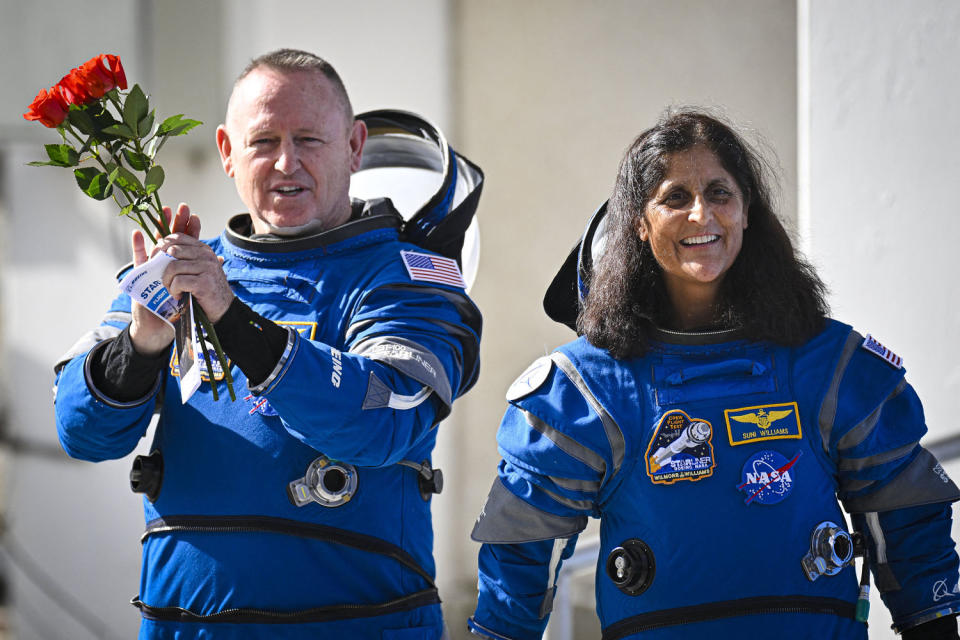Rival companies Boeing and SpaceX are gearing up for a busy week, with each set to launch their rockets and spacecraft on crucial test flights.
Boeing on Wednesday will try a third time to launch two NASA astronauts to the International Space Station aboard its Starliner capsule. Liftoff is scheduled for 10:52 a.m. ET from Cape Canaveral Space Force Station in Florida.
The following day, SpaceX will conduct a fourth uncrewed test flight of its Starship megarocket. Thursday’s launch will take place from SpaceX’s Starbase test site in Boca Chica, Texas, with a target launch window opening at 8 a.m. ET.
The two companies are seen as competitors in space flights, but this week’s launches have different goals. Boeing’s Starliner spacecraft was developed in partnership with NASA, to transport its astronauts to and from the space station — a commercial service that SpaceX has been carrying out for the agency since 2020.
Boeing’s third attempt to launch astronauts into space
If Boeing’s first crewed test flight is successful, it will pave the way for the Starliner capsule to perform routine flights to NASA’s space station, challenging SpaceX’s dominance.
On board the Starliner there will be NASA astronauts Barry “Butch” Wilmore and Sunita Williamswho plans to spend about a week on the space station before returning to Earth and landing at the White Sands Missile Range in New Mexico.

The last Starliner launch attempt was canceled Saturday With less then four minutes to takeoffafter an automatic abort was triggered by one of the computers that controls the Atlas V rocket. The rocket is manufactured by United Launch Alliance, a joint venture between Boeing and Lockheed Martin.
It was Boeing’s second launch attempt. The first, on May 6, was sunk with about two hours left in the countdown due to a problem with a rocket valve. A helium leak was later found in the Starliner capsule’s propulsion system, which led to further delays.
Boeing’s Starliner program overall has been plagued by delays and technical glitches. On the spacecraft’s first uncrewed flight in 2019, software problems forced mission controllers to shorten the trip. The company’s next attempt was delayed several times due to fuel valve problems. Only in 2022 did Boeing complete a unmanned flight to and from the space station.
SpaceX’s Starship could take NASA astronauts to the moon
Starship’s test flight on Thursday aims to demonstrate technologies and techniques that will be fundamental in future missions to the Moon.
Starship is the most powerful rocket ever developed and is designed to be completely reusable. The system is expected to play an important role in NASA’s plan to return astronauts to the moon: NASA has selected Starship to transport astronauts to the lunar surface on the Artemis III mission, which could launch in 2026.
SpaceX also hopes to use Starship to eventually reach Mars.
NASA is separately developing its own Space launch system megarocket and Orion spacecraft for missions to the moon. As part of the Artemis program, NASA envisions regular missions to establish a base camp on the lunar surface before eventually venturing to Mars.
SpaceX has made steady progress in each of its three previous Starship tests. O rocket’s debut flight in April 2023 it ended when the booster exploded several minutes after takeoff. A second starship launch in November achieved several milestones, including separation of the first stage booster and upper stage spacecraft, but the company lost contact with the vehicle Shortly after.
Starship’s third test flight in March saw the spacecraft successfully reach orbit, but the vehicle was lost upon re-entering Earth’s atmosphere. Still, SpaceX said it was able to complete several technology demonstrations, including transferring propellant between two of the spacecraft’s tanks in orbit and opening and closing the Starship’s cargo bay door in space — which could eventually be used to release satellites.
“This latest test provided valuable data for eventual ship-to-ship propellant transfers that will enable missions such as the return of astronauts to the Moon under NASA’s Artemis program,” SpaceX said in a statement.
In Starship’s upcoming fourth test flight, SpaceX aims to show that both the upper-stage spacecraft and the rocket’s first-stage booster, known as Super Heavy, can make safe, controlled landings on Earth.
During the last test flight, a planned burn in the landing process failed, SpaceX said, and the Super Heavy booster ultimately broke up in the Gulf of Mexico. This time, the company hopes to successfully execute the landing burn, achieving a “soft splash” of the booster in the Gulf of Mexico. It also aims to achieve a “controlled entry” of the Starship vehicle through Earth’s atmosphere before splashing down into the Indian Ocean.
This article was originally published in NBCNews. with



































